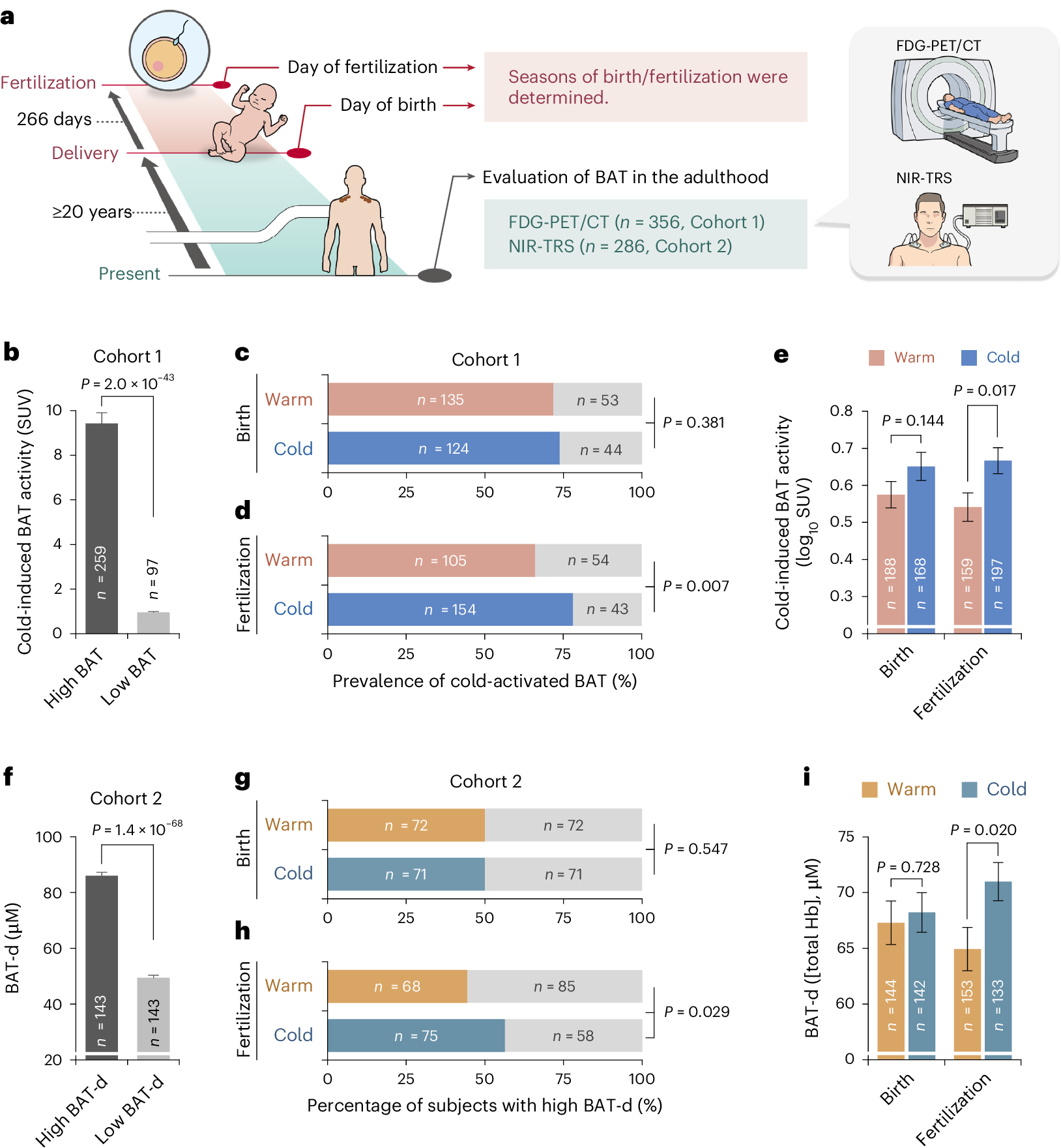2025-04-08 東北大学
<関連情報>
- https://www.tohoku.ac.jp/japanese/2025/04/press20250408-01-humans.html
- https://www.tohoku.ac.jp/japanese/newimg/pressimg/tohokuuniv-press20250408_01web_humans.pdf
- https://www.nature.com/articles/s42255-025-01249-2
ヒトにおける褐色脂肪を介したエネルギー消費の受精前由来の保存 Pre-fertilization-origin preservation of brown fat-mediated energy expenditure in humans
Takeshi Yoneshiro,Mami Matsushita,Sayuri Fuse-Hamaoka,Miyuki Kuroiwa,Yuko Kurosawa,Yosuke Yamada,Makoto Arai,Yuchen Wei,Makoto Iida,Kenichi Kuma,Toshimitsu Kameya,Tomoya Harada,Yoshihiro Matsumura,Tsuyoshi Osawa,Yoshiko Aoki,Hisashi Nakamura,Takafumi Hamaoka,Juro Sakai & Masayuki Saito
Nature Metabolism Published:07 April 2025
DOI:https://doi.org/10.1038/s42255-025-01249-2

Abstract
Environmental thermal stress substantially affects cellular plasticity of thermogenic adipocytes and energy balance through transcriptional and epigenetic mechanisms in rodents. However, roles of cold-adaptive epigenetic regulation of brown adipose tissue (BAT) in systemic energy metabolism in humans remained poorly understood. Here we report that individuals whose mothers conceived during cold seasons exhibit higher BAT activity, adaptive thermogenesis, increased daily total energy expenditure and lower body mass index and visceral fat accumulation. Structural equation modelling indicated that conception during the cold season protects against age-associated increase in body mass index through BAT activation in offspring. Meteorological analysis revealed that lower outdoor temperatures and greater fluctuations in daily temperatures during the fertilization period are key determinants of BAT activity. These findings suggest that BAT metabolic fate and susceptibility of metabolic diseases are preprogrammed by the epigenetic inheritance of cold exposure before the fertilization in humans.


